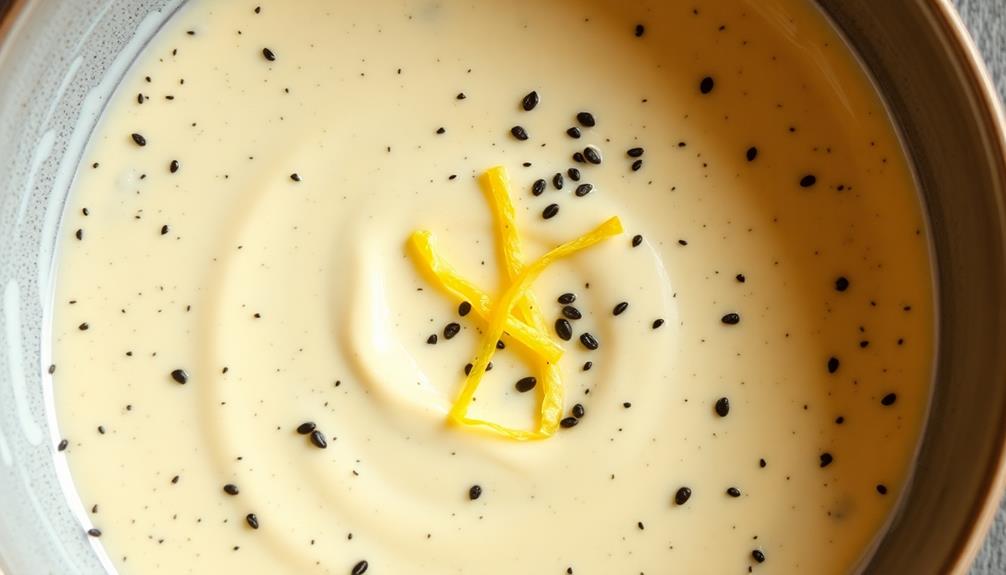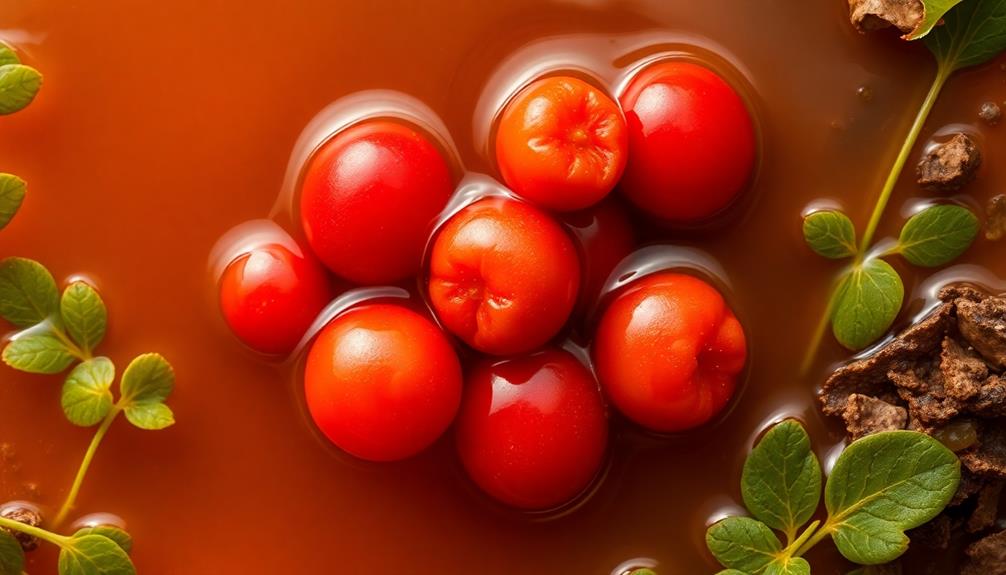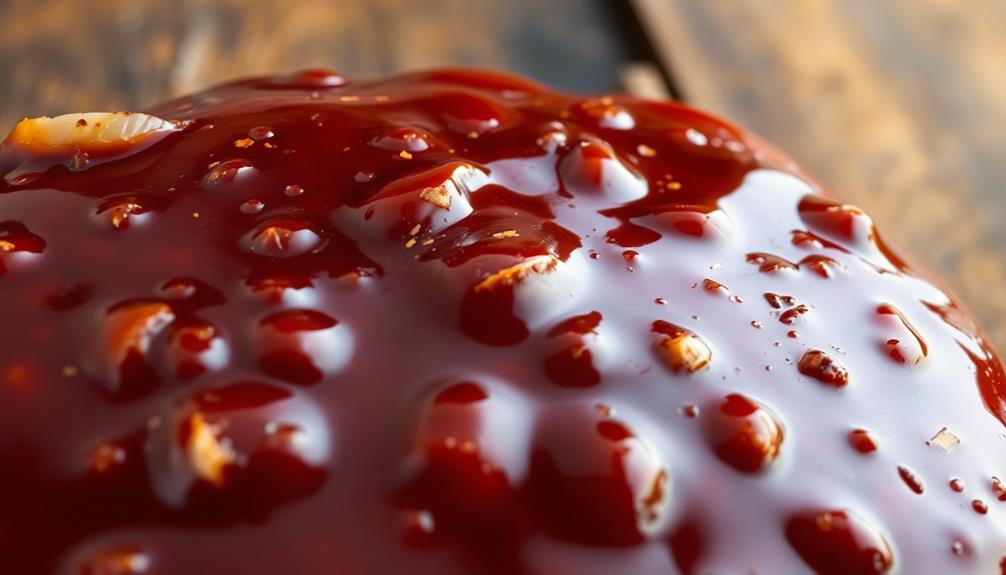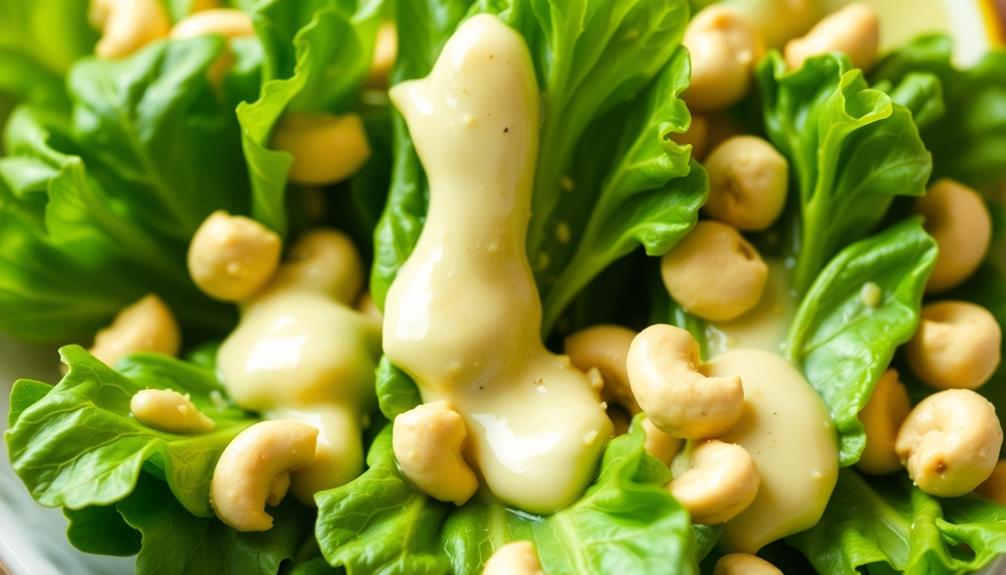Tahini-lemon dressing is a wonderfully creamy, tangy sauce that'll elevate your salads, grain bowls, and roasted veggies to new heights! You just whisk together tahini, lemon juice, garlic, and spices for a simple yet flavorful dressing. It's packed with healthy fats, vitamins, and minerals – a real nutrition boost. The best part? You can tweak the flavors to your liking by adding herbs or spices. Plus, it's super easy to make in advance and keeps for up to a week in the fridge. Get ready to transform your meals with this versatile and delicious dressing!
Key Takeaways
- A simple, creamy dressing made from tahini, lemon juice, garlic, and spices that enhances the flavor of salads, roasted vegetables, and proteins.
- The dressing's versatility allows for customization with herbs and spices, making it suitable for a variety of cuisines and dietary needs.
- The dressing can be prepared in advance, stored in the refrigerator, and used as a marinade, dip, or drizzle to elevate meals.
- Tahini provides a rich, nutty flavor and nutritional benefits like healthy fats, protein, and minerals, making the dressing a wholesome addition to meals.
- The tangy, balanced flavor profile of the dressing complements a wide range of ingredients and helps transform ordinary dishes into gourmet experiences.
History

Tahini, a paste made from ground sesame seeds, has been an integral part of Middle Eastern cuisine for centuries.
It's believed that tahini originated in ancient Egypt, where sesame seeds were first cultivated and used in various dishes. Over time, the recipe and preparation methods spread throughout the region, becoming a staple ingredient in countries like Lebanon, Israel, and Syria.
Interestingly, the word "tahini" comes from the Arabic word "tahana," meaning "to grind." This reflects the traditional way of making tahini, where sesame seeds were meticulously ground into a smooth, creamy paste using a mortar and pestle.
Today, modern technology has made the process much easier, allowing people all over the world to enjoy this versatile ingredient.
As with any culinary tradition, understanding the history of ingredients like tahini can enrich our appreciation of their role in cultural dishes and promote better financial planning for elder care.
Whether you're drizzling it over falafel, using it as a dip, or incorporating it into your favorite salad dressing, tahini's nutty flavor and nutritional benefits make it a delightful addition to any meal.
Recipe
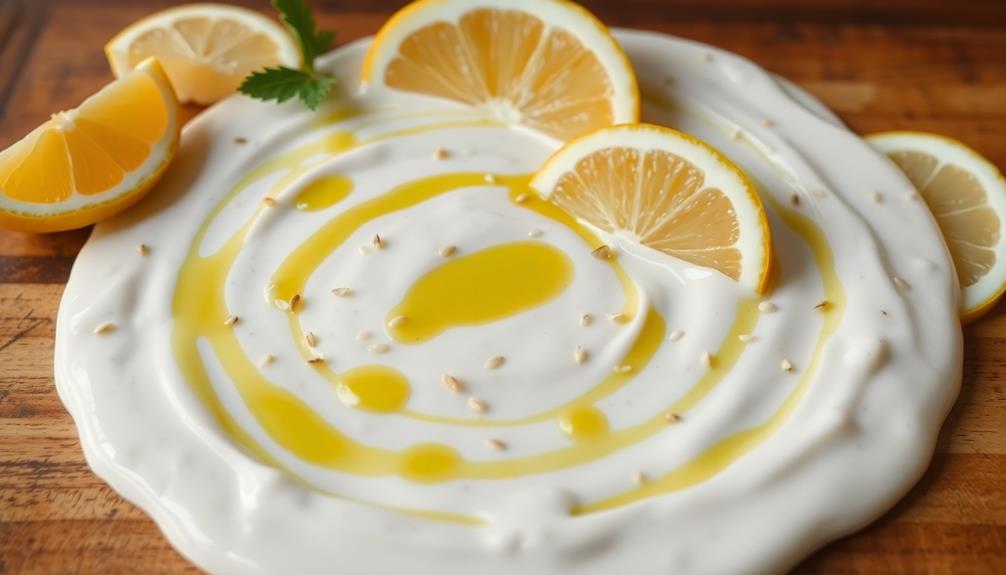
In this refreshing and versatile tahini-lemon dressing, the nutty flavor of tahini is perfectly balanced by the bright acidity of lemon juice.
It's a simple yet delicious way to add a flavorful boost to salads, grain bowls, roasted vegetables, and more. This dressing is also a great way to incorporate healthy fats into your diet, which is essential for those following a low-carb approach, as it aligns well with essential low carb foods.
The key to this dressing is to achieve the right consistency by gradually adding the lemon juice and water until you reach your desired texture. Start with a thicker dressing, then thin it out to your preference.
- 1/4 cup tahini
- 2-3 tablespoons freshly squeezed lemon juice
- 2-3 tablespoons water
- 1 garlic clove, minced
- 1/4 teaspoon ground cumin
- 1/4 teaspoon salt
- Freshly ground black pepper to taste
In a small bowl, whisk together the tahini, 2 tablespoons of lemon juice, and 2 tablespoons of water until smooth and creamy.
Add the garlic, cumin, salt, and pepper, and continue whisking until well combined. If the dressing is too thick, add more lemon juice and water, 1 tablespoon at a time, until you reach your desired consistency.
This dressing can be stored in an airtight container in the refrigerator for up to 1 week.
The flavors will meld and intensify over time, so it's best to make it a day in advance if you have the time. Adjust the seasoning as needed before serving.
Cooking Steps
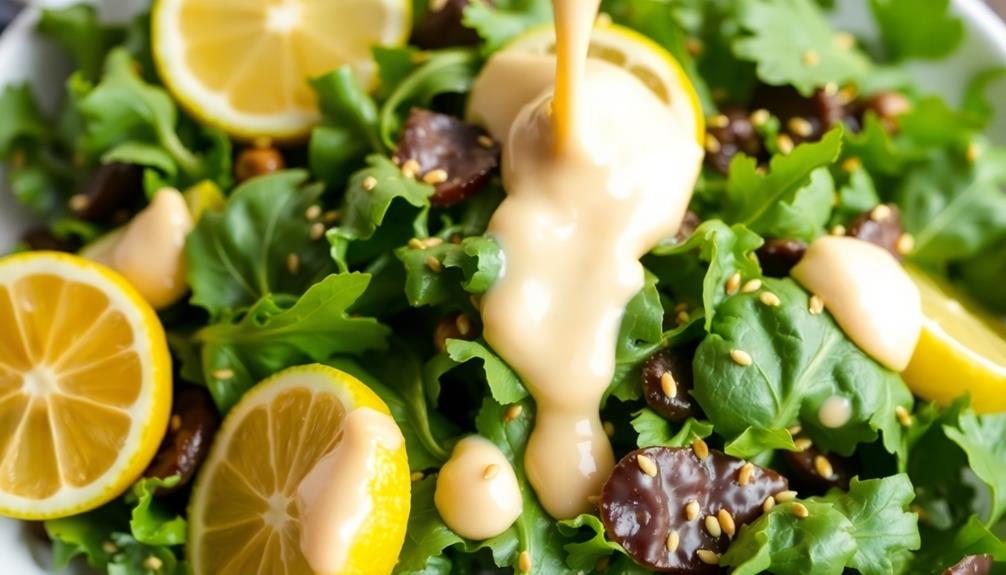
Whisk the tahini and lemon juice together in a small bowl, ensuring a harmonious blend that's as calming as a well-designed Zen garden.
Drizzle in the olive oil while whisking to create a smooth dressing.
Now, stir in the minced garlic and season with a pinch of salt and pepper.
Give it a taste and adjust the seasoning as needed – you want that perfect balance of tanginess and creaminess!
Step 1. Whisk Tahini and Lemon Juice

Once you have your tahini and lemon juice ready, go ahead and whisk them together in a small bowl.
Tahini, a paste made from ground sesame seeds, will provide a rich, creamy base, while the lemon juice will add a tangy, refreshing kick.
Start whisking slowly at first, gradually increasing the speed to blend the ingredients until they're smooth and fully incorporated.
Don't be afraid to put some muscle into it – the more you whisk, the creamier your dressing will become.
Keep going until you've got a nice, even consistency.
Feel free to add a pinch of salt and pepper too, if you'd like a little extra seasoning.
Once it's all whisked up, your tahini-lemon dressing is ready to go!
Drizzle it over salads, use it as a dip for fresh veggies, or even as a marinade for grilled chicken or tofu.
The possibilities are endless, so get creative and enjoy!
Step 2. Add Olive Oil
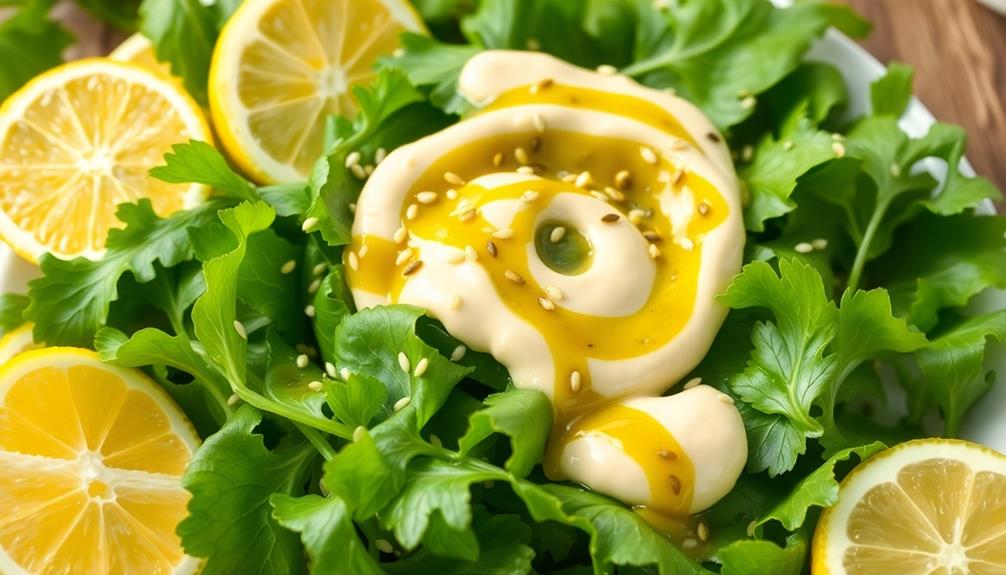
After whisking the tahini and lemon juice, you'll want to slowly drizzle in a few tablespoons of good quality extra virgin olive oil.
This will help create a creamy, pourable dressing that's perfect for salads, grain bowls, or as a dip for fresh veggies.
Make sure to go slowly as you pour in the olive oil, whisking continuously to fully incorporate it. The olive oil will add a lovely richness and depth of flavor to the dressing.
You can use as little as 2 tablespoons or up to 4 tablespoons, depending on your personal preference. Just be sure to taste as you go and adjust the amounts to suit your taste buds.
The olive oil will help bind all the flavors together, creating a smooth and silky dressing that's bursting with deliciousness.
Get ready to drizzle and enjoy!
Step 3. Stir in Minced Garlic
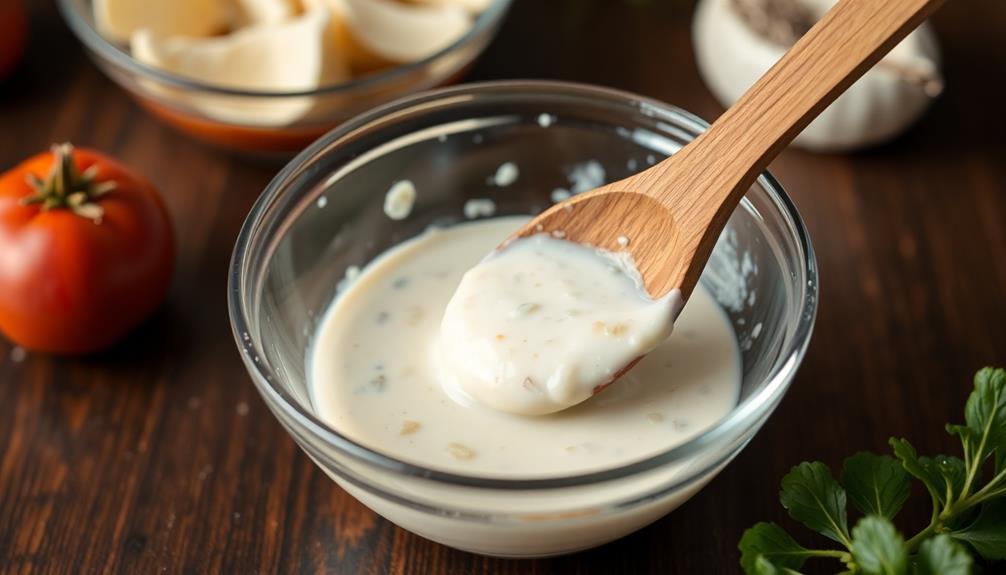
Next, you'll want to stir in some minced garlic to the tahini-lemon dressing. This extra step adds a wonderful punch of flavor that really brings the whole thing together.
Just grab a couple of cloves of fresh garlic, peel them, and give them a good mince with your knife or a garlic press. Then, simply stir the minced garlic right into your dressing.
You'll notice the aroma immediately – it's going to smell delicious! The garlic adds a savory, garlicky note that complements the nutty tahini and bright lemon flavors perfectly.
Be sure to stir everything together really well so the garlic is evenly distributed.
Now your tahini-lemon dressing is ready to drizzle over salads, grain bowls, roasted veggies, or whatever your heart desires.
Get ready for big, bold flavors in every bite!
Step 4. Season With Salt and Pepper
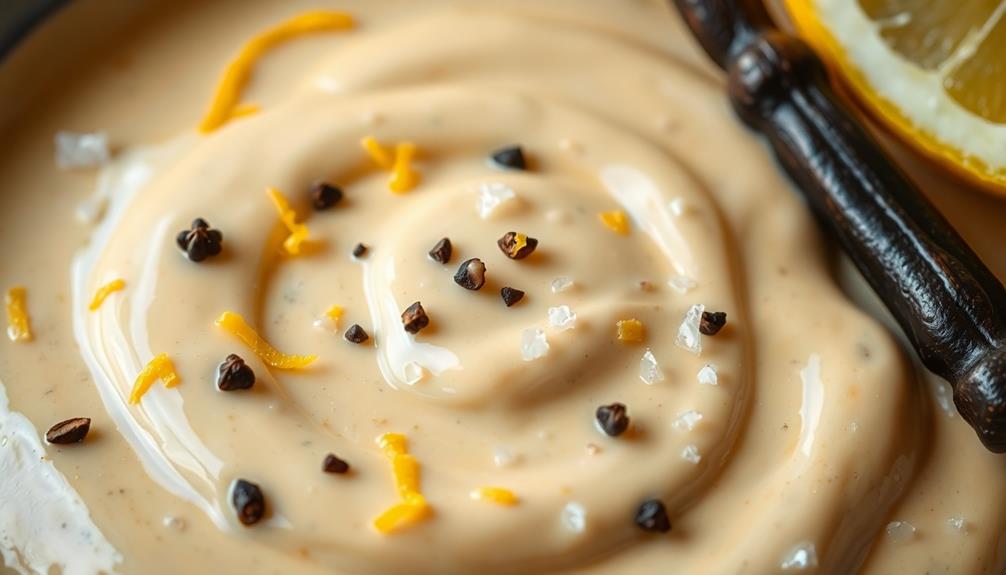
The final step in preparing the tahini-lemon dressing is to season it with salt and pepper. This is where you get to make the flavors really pop! Grab your salt shaker and give the dressing a few shakes, tasting as you go. You want just the right amount – not too salty, but enough to bring out all the yummy goodness.
Next, it's time for the pepper. Start with a few grinds of your pepper mill and give the dressing a stir. Taste again and add more pepper if you'd like a little more zing.
The great thing about seasoning with salt and pepper is that you can keep adjusting it until it's perfect for your taste buds. Just remember to go slowly and taste frequently so you don't accidentally overdo it.
Once the salt and pepper are just right, your tahini-lemon dressing is ready to drizzle over your favorite salad or use as a dip for fresh veggies. Yum!
Step 5. Taste and Adjust Seasoning
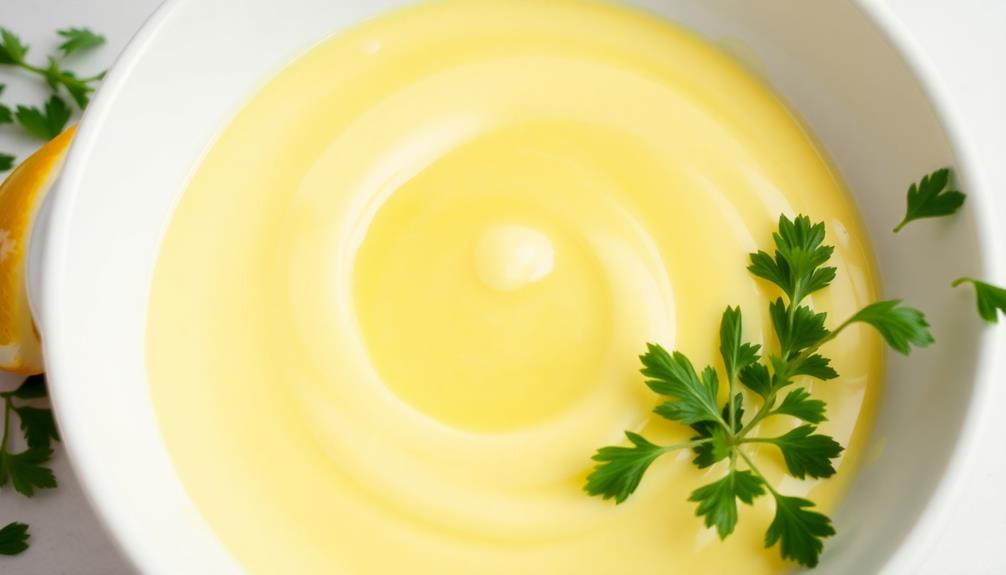
Tasting and adjusting the seasoning is the final step in perfecting your tahini-lemon dressing.
Give the dressing a good stir, then dip in a clean spoon and take a taste. How's the balance of flavors? Does it need a little more lemon juice to brighten it up? Or maybe a pinch more salt to bring out the other ingredients?
Don't be afraid to tweak the seasoning until it's just right. After all, your taste buds know best!
Start by adding small amounts of lemon juice or salt, then give it another taste. Keep adjusting in tiny increments until the flavors sing. You want a dressing that's tangy, creamy, and perfectly seasoned.
Once you're satisfied, give the dressing one final stir. It's now ready to drizzle over your favorite salad or use as a dip for crunchy veggies.
Enjoy the bright, nutty goodness of your homemade tahini-lemon dressing!
Final Thoughts
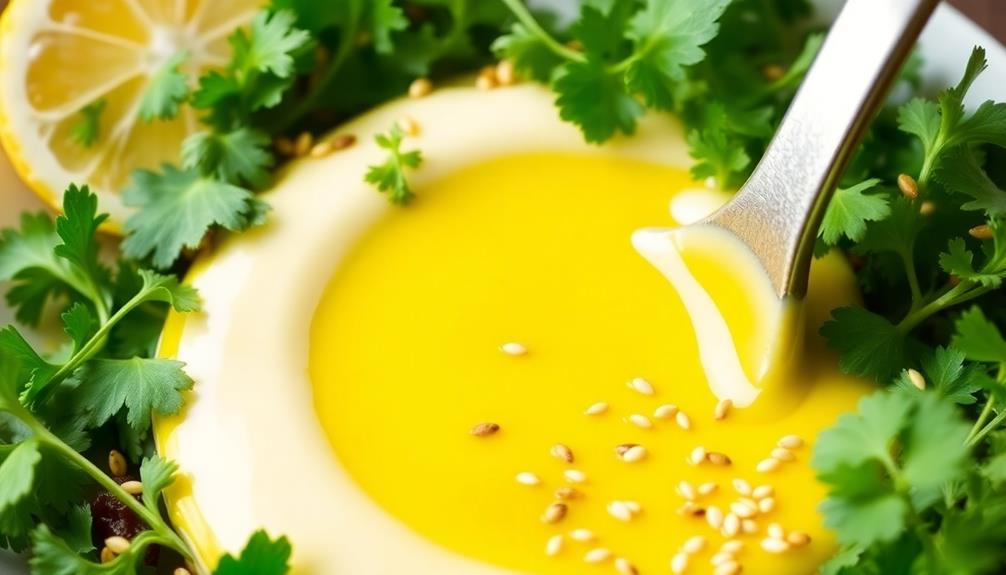
With this versatile tahini-lemon dressing in your culinary arsenal, you'll find endless ways to elevate your meals.
Whether you're tossing it with roasted vegetables, drizzling it over grilled chicken, or using it as a dip for fresh pita, this creamy, tangy sauce adds a delightful zing to any dish. Its vibrant flavors also make it a fantastic marinade for fish or tofu, ensuring your protein is bursting with flavor.
Don't be afraid to get creative – the possibilities are truly endless!
Try swapping in different herbs or spices to customize the taste to your liking. A sprinkle of za'atar or a dash of smoked paprika can give it an unexpected twist.
And remember, this dressing keeps well in the fridge, so you can easily prep it ahead of time and have it on hand for quick meal assemblies.
With this dressing in your culinary toolkit, your taste buds are in for a real treat!
Frequently Asked Questions
Is Tahini Gluten-Free?
Yes, tahini is gluten-free. Tahini is a paste made from ground sesame seeds, which are naturally gluten-free. As long as no other gluten-containing ingredients are added, you can enjoy tahini without worrying about consuming gluten.
How Long Does the Dressing Last in the Fridge?
The dressing should last about 3-5 days in the fridge. It'll keep its flavor and texture, but you'll want to give it a good stir before using it again. Just keep it stored in an airtight container.
Can I Substitute Lemon Juice With Lime Juice?
You can absolutely substitute lemon juice with lime juice in the dressing. The flavors will be slightly different, but it should work just as well. Give it a try and see what you think!
How Can I Make the Dressing Thicker?
To make the dressing thicker, you can add more tahini or reduce the amount of liquid ingredients. You can also try using an immersion blender to emulsify the ingredients and create a creamier texture.
Is the Dressing Suitable for Vegans?
Yes, the dressing is suitable for vegans as it contains no animal-derived ingredients. The tahini and lemon juice provide the primary flavors, making it a great option for those following a plant-based diet.

